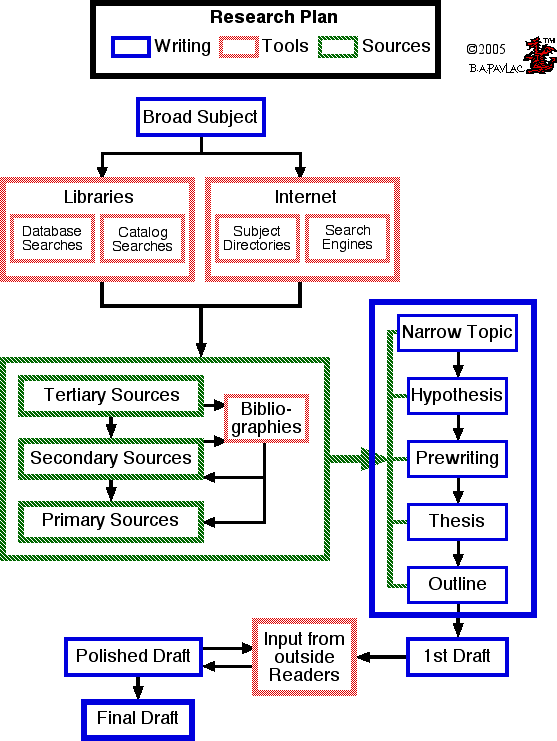
Suggestions for How to Carry out a Major History Research Project using a Research Plan
1. Choose a subject (usually it will be relevant to you class, or limited by your instructor). Probably, you will then need to narrow your topic down, and often define your research paper by gaining a working hypothesis and a thesis. Most history papers require an argument or a thesis statement. A hypothesis is a tentative thesis that can define your research. For more on theses, click here. For Essentials on Research from Corgan Library, click here.
2. Find sources. You should use both
internet and libraries to find your sources. The best sources are still
those that are found in libraries or archives, so do NOT limit your searches to
the web, even if it is easier.
In libraries you can find sources through
- catalog to the collection, for example, the Corgan library's catalog, and NPLN group catalogues;
- links to databases, see for example the Corgan Library page.
On the internet you can find sources through
- subject directories, heirarchical indexes, etc., such as yahoo, or even set library pages, or Prof. Pavlac's Women's History Site;
- search engines (For a list of the better ones, with descriptions, click here).
3. Learn from your sources. Historian's usually distinguish between three kinds of sources, tertiary, primary, secondary. For more on sources, click here. You can use sources to find more sources. Reading tertiary sources like encyclopedias, dictionaries, and handbooks can give you the general outline of subjects and their problems. They often have useful bibliographies (lists of books used), that are sources you can use. Secondary sources (professional historical books, scholarly articles) also have bibliographies that should lead you to more information. Primary sources, the immediate records of the past, should be used whenever possible. For some help on finding primary sources, click here.
4. Evaluate your sources. While you are researching, you should be carefully judging each source. For suggestions on how to evaluate sources according to the Historical Method, click here; for internet sources, click here, with a Short Form for Source Evaluations, here. Take careful notes from your sources, always recording carefully from where you got what information.
5. Start writing, while you research. You can, and should, begin writing as soon as possible. Do not wait until you have collected all your information. Prewriting can be based on good notes. You should be shaping your thesis in writing. To get there, if you started with a broad subject, along the way you should have been refining your subject into a narrow topic or a hypothesis. For more on refining a thesis, click here. Writing as you go helps you to clarify your ideas, measure the length of parts of your argument, and finish the paper sooner. You should also shape up your outline as you write, being sure to keep a logical order to your material. For more on outlines, click here.
6. Write a rough draft. Write your rough draft as if it were your finished paper. Put it aside for at least a day, and then go over it again carefully. You might use the checklist provided by the instructor.
7. Have other people critique your draft. It is best to talk to the person, but written comments, perhaps according to a checklist, are also good. Rewrite until you have a polished draft. The more you rewrite, the better it will be.
8. Submit your final draft. Notice that the end product is called a draft. Do the best you can, but every piece of writing has room for improvement. Try to get it done well in advance of the deadline, in case you have problems with printing out the paper.
For more information useful on research plans see
For an outline of the Historical Method, click here.
The Bedford Researcher <http://bcs.bedfordstmartins.com/bedfordresearcher/>.
These pages may be printed and used, |
URL: http://brianpavlac.org/teach/thEssay.html |
